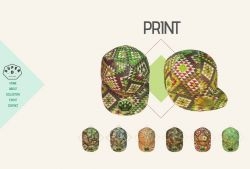Back to the future: ‘Made in Italy’ gets a makeover

But as the catwalks and fashion fairs wrap up on Monday, even the most rebellious young brands said they still look to tradition to guide their way.
“We want to become a new wave of Made in Italy,” Andrea Tessitore, chief executive of trendy eyewear maker Italia Independent, told AFP in an interview.
“The idea of Made in Italy is an expression of the know-how of this country that we want to bring to the market with a youthful twist,” he said.
The company, whose profits went up 53 percent in the first half of the year, makes an array of multi-coloured frames including heat-sensitive and velvet-covered ones, using advanced technology from the automotive sector.
“Innovation also helps because it makes it harder for counterfeit production. By the time they are copying me, I have already moved on!” he said.
Photo displays along Via della Spiga in the heart of Milan’s fashion district underscored the message of updating tradition, juxtaposing images of craftsmen of yesteryear with the latest designs on sale in the shops.
Andrea Provvidenza expresses a similar idea in his own designs for loden coats — usually associated with an older generation — for which he uses lighter materials and adds fluorescent buttons and coloured edging.
“This is a revisiting of tradition,” Provvidenza said, underlining that however modern his designs may look, the sartorial quality is the same.
Distinctive features of the loden have also been retained by his brand LodenTal — like the slit under the armpit to allow wearers in the past to raise their arms while aiming a rifle on hunting trips.
Provvidenza was one of hundreds of exhibitors at White, a designer fair taking place in Milan during fashion week.
At a nearby stall, there were lines of skirts with prints of dogs and monkeys and brushstrokes in bright colours.
“We go into historical archives and look at textiles from the past and then we try to innovate,” said Cecilia Bianchi, 26, one of the three skirt designers behind the Eggs brand.
Many young designers spoke of a similar approach — like Matteo Gioli, a 27-year-old hatmaker from Florence who learnt from the city’s artisans.
Gioli’s brand SuperDuperHats includes traditional models and funky items like a line of textile baseball caps with flowers called “Jungle Caps”.
“Studying only helps you so much. It has to be about technical skills learnt from craftsmen,” Gioli said at a party celebrating up-and-coming designers.
Tomaso Trussardi, a co-owner in his family’s luxury brand, told La Repubblica daily that on top of craftsmanship, Italian fashion houses were also trying to project a distinctive lifestyle with their designs, however varied.
“What we are selling in the world is not just the quality of bags or clothes but a sense of history and art, the taste of our cuisine, a lifestyle that everyone likes, from Brazilians to Chinese, Russians to Americans,” he said.
“This creativity is our fortune, one of Italy’s few natural resources!”.
Luxury cashmere designer Brunello Cucinelli’s collection is one of many showing in Milan that were strong on heritage as well as innovation.
One of his fashion house’s ads for magazines showed a black and white photo of a group of elderly people talking to young children in a classroom.
A single line read: “Our fathers told us”.

